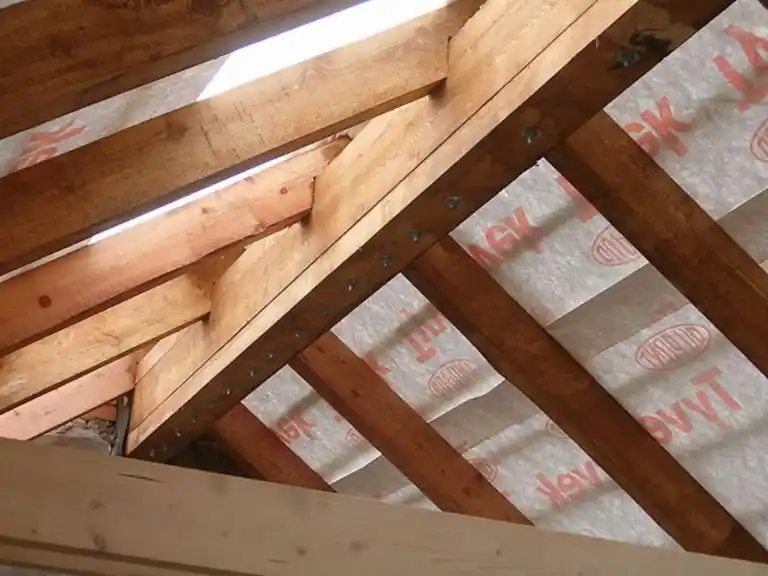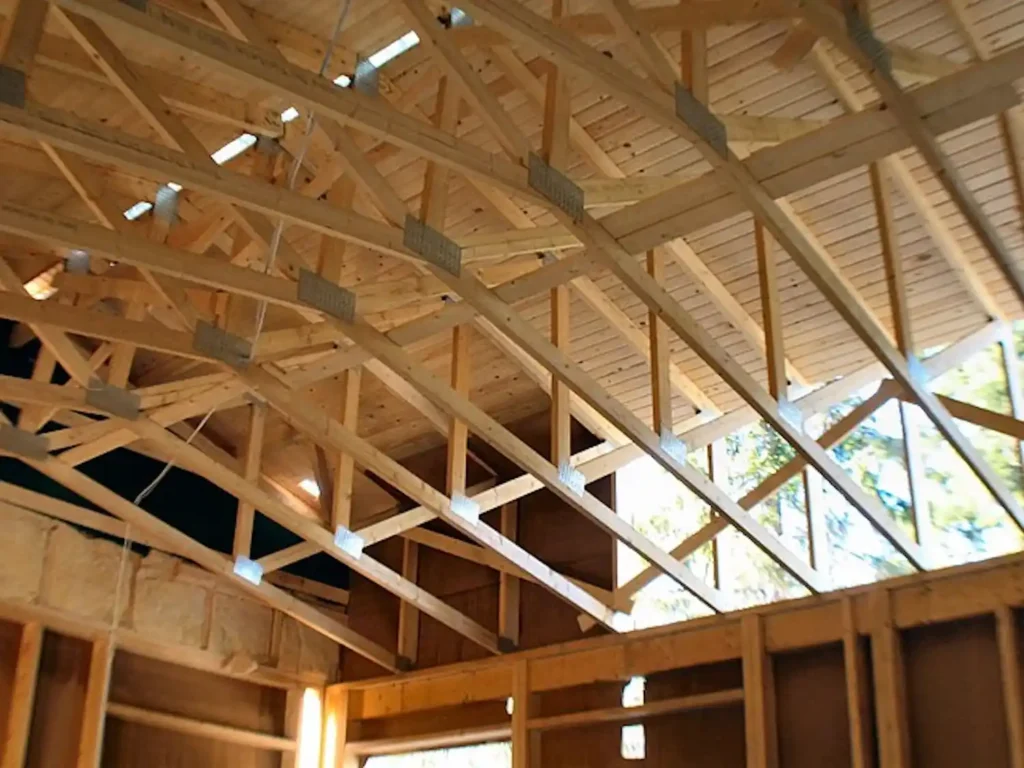First-time homeowners may not realize how complex a roof system is until they encounter a ceiling leak and need to call a professional roofer. A roof’s structure encompasses more than just the shingles themselves. Equally crucial to the material used on top of your home is something called the roof sheathing underneath. This article will explain roof sheathing, what it does, and why it’s essential for your home.
WHAT IS SHEATHING ON A ROOF?
Roof sheathing, or roof decking, is the layer of wood installed on the roof’s trusses and joists. Roof sheathing is the first piece of protection for your roofing and helps keep them from getting damaged by moisture and the elements.
WHAT’S THE DIFFERENCE BETWEEN ROOF SHEATHING AND UNDERLAYMENT?
Roof decking and underlayment are two vital elements of your roofing system. Both protect the structure of your home from the elements and keep it watertight, but they do so in different ways.
ROOF SHEATHING
The roof sheathing is the layer of wood that acts as a barrier between the rafters and felt underlayment.
UNDERLAYMENT
Underlayment is an additional layer of support that goes on top of roof decking to protect from rain and snow and any moisture that might come up through gaps in your sheathing. You might know it as tar paper or felt paper. Underlayment is made of asphalt-soaked organic mats or asphalt-coated paper, which resist water.
INSTALLATION ORDER
Your roof is covered with roof sheathing materials, which protects the joists underneath. Felt paper underlayment prevents leaks and adds insulation. A layer of asphalt shingles protects against rainwater and heat loss in cold weather.
WHAT ROOF SHEATHING IS MADE OUT OF
Roof sheathing is typically made from plywood or OSB (oriented strand board). These wood boards are designed to be strong enough to support the weight of the roofing system and its components while also being flexible enough to withstand changes in temperature and moisture.
Each type of roof system has its own benefits and drawbacks regarding durability and cost efficiency.
ORIENTED STRAND BOARD OSB
Oriented strand board (OSB), is made from wood strands that are pressed into sheets. Plywood is made from sheets of veneer glued together to create a more robust panel for your roof.
OSB is lighter and less expensive than plywood, so it’s often used for roofs where the weight requirements aren’t as high.
PLYWOOD
Plywood is much more durable than strand board OSB, but it’s also a significantly heavier material and costs more. It’s often used for roofs that need to carry heavy loads like slate or concrete roofing tiles.
ROOFING SERVICES
Most roofers will use OSB on the entire roof unless they’re working with a heavier material like slate or concrete roofing tiles—in which case, they’ll use plywood instead.
WHAT DOES ROOF SHEATHING DO?
Roof sheathing, also known as roof decking, provides structural support for the roof. When installed by a licensed professional, a strong layer of sheathing ensures roofing materials are distributed evenly.
INSTALLATION
When installed properly, it helps the roof resist fires and keeps it from leaking. It can cause leaks, uneven ridges and valleys, and other problems when installed incorrectly.
ROOFING SHEATHING BENEFITS
Sheathing is an essential part of a roof because it helps to ensure that your home is structurally sound and durable. Sheathing offers a sturdy support system to roofing systems, and many other benefits, including weather resistance and fire protection.
STRUCTURAL INTEGRITY
The roof sheathing offers a surface for the underlayment to be applied to. A strong layer of sheathing maintains the correct distance between the trusses and rafters. When sheathing is put over several trusses or rafters, the rafters and trusses become one solid unit rather than separate structural components. This sturdy support system supports the weight of shingles, making sure it’s distributed evenly.
WEATHER RESISTANCE
Sheathing boards provide even more protection for the roof’s trusses from the elements than asphalt shingles, which already have weatherproofing treatment. Most sheathing boards receive weatherproofing treatments to resist the elements, which protects your roof and home from wear and tear and rot.
RESIST FIRES
The sheathing of a roof can also prevent fires. Although nothing is entirely fireproof, several types of roof sheathing receive fire retardant treatment to prevent fires from breaking out or spreading on the roof or in the attic. Class A asphalt shingles and underlayment provide an additional layer of protection with fire retardant treatment.
IS SHEATHING NECESSARY?
It wasn’t always standard practice to utilize roof sheathing when individuals first started constructing asphalt shingle roofs. Over time, most roofers and homeowners discovered that roof leaking was far more common when several weatherproofing treatments like sheathing or decking boards weren’t installed.
Before the development of plywood, the most common kind of decking was made of long, individual wood boards.
SHEATHING CODE
Now, it is part of the International Residential Code (IRC R905.2.1) to fasten asphalt shingles to sheathed decks for any new roof.
WHEN TO REPLACE ROOF SHEATHING
When determining whether or not your roof sheathing boards need replacing, look for a few signs in your attic. Other symptoms that might indicate damaged or worn-out roof sheathing include the following.
SAGGING
If the shingles aren’t straight across the house, it’s possible that the roof sheathing boards need replacing. If left too long, the problem may require an entire roof replacement.
ROTTING WOOD
Rotting wood will be discolored, soft, and musty along planks. Mold growing in black streaks on boards from previous leaks in the attic.
HOLES
If you can see the sky inside the attic or crawlspace, it’s time to replace your roof sheathing. You might also hear water running through the walls or ceiling after heavy rain.
WATER DAMAGE
Telltale signs of damaged sheathing boards show as water stains on your ceiling or puddles on your floors.
BROKEN BOARDS
The damaged sheathing is easy to identify since it causes the roof to droop. Look for sawdust or shattered pieces of the roof structure or planks overhead.
CONCLUSION
Roof sheathing is a crucial part of several weatherproofing treatments for your roofing system. Whether you have asphalt shingles or tile, you need to ensure that the roof sheathing is in good condition before it can protect your home from rain and wind damage. If your house’s sheathing is damaged, it needs replacing so that moisture doesn’t seep through into other parts of the house, causing more damage.





